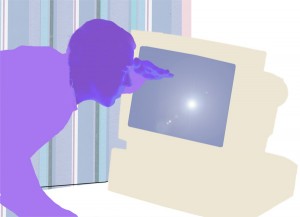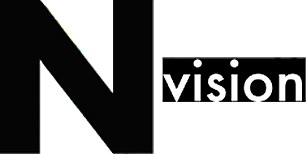
About half a year ago I read or perhaps better ‘cross-read’ the slow media manifesto, this being off course a faux-pas, since ‘Slow Media’ is a term coined to describe the creation and consumption of communication in a careful and considered way. Like the Slow Food movement, it’s as a counter movement to the present day communication media glut and its fast pace turnaround. My superficial read triggered a notion on why it is that (editorial) illustration has not yet been able to become part of the online edition of editorials. Where printed magazine and newspaper are the traditional environment for editorial illustration.
In a second, closer, reread I still feel great sympathy for The manifesto, though perhaps somewhat hair-shirted, it is trying to create a space from where we can discuss the values that lie within the traditional media and that have been neglected or perhaps forgotten in the rush of the digital era. At the same time it is realistic and embraces the qualities of the new media and new communication possibilities. Seen from the perspective of ‘slow media’ editorial illustration’ is successfully part of the balanced relationship between image and text crystallised in printed magazines and newspapers. But online media, don’t not do slow, in fact it’s a celebration of speed.
At the start of the online communications, not that long ago, only simple graphic text-based interface was possible. And through its early phases of its rapid development there have been all kinds of technical reasons why information had to be compact in order for the content to reach us without too much waiting. Only the last few years have we arrived at a point where speedy online communications are no longer hindered by more developed graphics and the use of visuals such as pictures and movies. In the online editions of editorials, image heavy by tradition, photography found its way back in and video was added as the new feature. But interestingly enough, though these online editions of editorial media formats are still very much an echo on its printed formats, they have nearly all left out the ‘handmade image’ the illustration.
To place an illustration does not take more effort, more server space or time. The subjects in online editions of editorials have not changed and the journalists/ editors will still need to take some time to compose an article and it takes as much time to assign a photographer as an illustrator. There have always been trends to either use more photography based images or illustrated images, but at the moment in advertising, which is very sensitive to popular trends, illustration is regularly used, drawing or vector and ‘graffiti-style’ graphics are hot. When it comes to getting cheap and ultra quick images, stock agencies represent both photographic – and illustrated archives and the costs of a quality photograph are equal to that of an illustration. So if it’s the same effort to get an illustration as a photograph, why don’t the online editorials like using illustration? Is it something about the way illustration is perceived, something about its expression and qualities that are not in sync with the ‘feel’ of the online editorial?
I want to dedicate the coming time to understanding this notion of editorial illustration as slow and what this means. I’ll be exploring the ’Slow media manifesto’ and look at how it connects with illustration. I’ll be looking at craftsmanship which represents a traditional idea of dedication and a slow pace but it is still very much part of modern media. I’ll be looking at the message of the illustration, how the materiality of illustration foretells a perception and thus an interpretation of its meaning. And I’ll be looking how new media editions differ in its demands from print and how these demands exclude or include certain type of expressions. Finally I’ll hope to present ideas how illustration, as a slow medium should gain a place within the new media realm, perhaps in relationship with different contexts or thinking towards a hybrid form.
Stay tuned….



